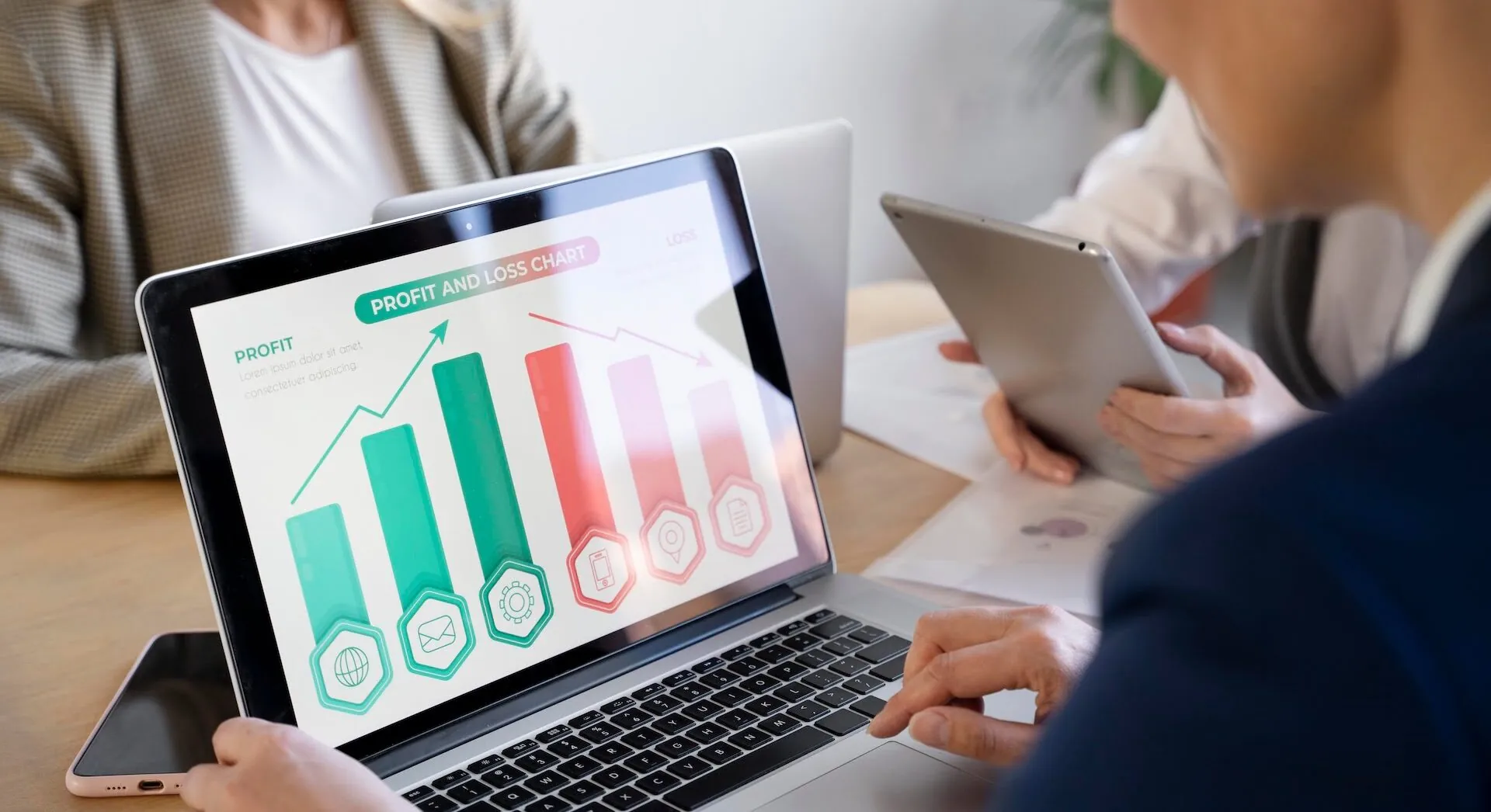B2B Sales Funnels: Strategies and Examples
Welcome to a comprehensive exploration of B2B sales funnels – the ultimate guide that empowers you to steer your sales journey with finesse! Within this article, we delve into six core strategies that form the bedrock of successful B2B sales funnels, accompanied by real-world examples that illuminate their effectiveness.
Whether you’re an experienced B2B sales expert or a newcomer, this guide provides actionable insights for boosting conversions, nurturing leads, and sealing deals. Join us as we uncover the winning formula that shapes exceptional B2B sales funnels!
What is a B2B Sales Funnel?
In the world of B2B sales, a sales funnel is more than a concept – it’s a strategic journey that transforms potential leads into loyal clients.
In a recent Databox survey, 30% of marketers believe that 3.1% to 5% is a good sales funnel conversion rate, but this can vary by industry. Aiming for at least 1% higher than the general industry conversion rates keeps you ahead of the competition. Think of it as a roadmap that guides your prospects through a series of stages, nurturing them from initial awareness to final commitment.
Understanding B2B sales is crucial for grasping the significance of the sales funnel. Unlike B2C sales, where individuals are consumers, B2B involves businesses as clients. This means decisions are often complex, involving multiple stakeholders and longer decision-making cycles. Learn about this and more as we navigate the B2B sales funnel stages from initial awareness to definitive commitment.
So, now imagine embarking on a voyage through the intricacies of B2B sales, where each stage unveils new insights and possibilities.
The B2B sales funnel is not just about closing deals, it’s about forging connections, addressing complex needs, and nurturing relationships that transcend the transaction. It’s a journey where strategy, engagement, and transformation converge, resulting in exceptional outcomes for your B2B sales endeavors. Going forward, you should definitely familiarize yourself with B2B email marketing best practices.
6 Best Strategies for B2B Sales Funnels
1. Crafting an Impactful Awareness Stage
In the vast expanse of the B2B sales funnel, the journey commences with the awareness stage.
At this initial point, potential buyers are introduced to your brand. This often occurs through inbound marketing strategies, such as engaging blog posts and informative content. The primary objective in this stage is to help individuals recognize the underlying problems that demand solutions. It’s about guiding them to a realization of the issue at hand, which requires resolution.
By providing valuable insights and solutions to common industry challenges, you spark curiosity and initiate the process of lead generation. This phase establishes the groundwork for subsequent actions within the buyer’s journey, creating a foundation of brand recognition that facilitates the development of stronger bonds.
In the B2B world, businesses excel by identifying and proactively addressing customer problems. This approach not only uncovers challenges but also provides solutions customers might not have considered. The essence lies in guiding customers through anticipating, addressing, and resolving issues.
Vidyard’s platform allows personalized video creation for effective communication with potential customers and promoting deals. AI streamlines video creation, minimizing recording time and maximizing deal-closing time. Their “How to Create the Best How-To Videos” showcases successful awareness-stage content, offering detailed how-to video creation guidance without a sales pitch.
2. Engaging Prospects in the Interest Stage
Advancing through the B2B sales funnel, the engagement stage emerges as a pivotal phase.
Having cultivated awareness in potential buyers, the goal now is to nurture and solidify their interest. Through strategic messaging and interactive experiences, your brand aims to captivate and resonate with these prospects on a personal level.
This phase involves delivering tailored content that addresses their specific pain points and challenges, thereby establishing a genuine connection. If you communicate with your buyers via phone, you can understand your B2B audience better with call tracking. It can help you analyze conversations and provide interested prospects with relevant content.
Webinars, videos, and content deepen engagement, guiding prospects towards later consideration stages. Webinars, as virtual events, offer informative content, interactivity, and strong conversion potential, driven by attendees’ genuine interest in your brand.
Once the interest is established, potential buyers might reach out to you in a live chat or through email, asking for details. Make sure to organize an internal knowledge base for your support agents, so that they can quickly find the necessary information and assist leads efficiently.
3. Nurturing Leads through the Consideration Stage
As the B2B sales journey progresses, the consideration stage emerges as a critical waypoint. This phase mirrors a traveler evaluating options before embarking on a chosen path. In a similar vein, potential clients evaluate the worth of your solution, seeking comprehensive insights to make an informed decision.
For sales and marketing professionals, the consideration stage is akin to presenting an intricate tapestry of value. Just as a traveler reads reviews and inspects maps, prospects delve into case studies, testimonials, and in-depth guides. Here, the aim is to provide them with a panoramic view of how your solution aligns with their unique needs.
Incorporating these elements isn’t just about showcasing your product’s features; it’s about highlighting its potential to address challenges and create opportunities. By immersing prospects in a world of informed evaluation, you’re instilling confidence and positioning your brand as a trusted guide along their journey. The consideration stage, much like a compass, guides them towards a destination brimming with value and promise.
Explore MailChimp’s vendor comparisons and buying guide, titled “Which marketing solution is right for you?” This resource provides insights, direct MailChimp vs. competitor comparisons, and social proof, aiding decision-making by showcasing MailChimp’s advantages.
4. Sealing the Deal in the Decision Stage
Progressing further through the intricate pathways of the B2B sales funnel, the decision stage emerges as a defining pinnacle. At this significant juncture, prospects are poised to take a transformative step.
Having traversed the journey from initial awareness to thoughtful consideration, they are equipped with the insights needed to make a well-grounded choice. In this crucial phase, your brand’s focus shifts to empowerment, equipping prospects with the tools they need to confidently move forward.
This includes offering clear calls-to-action, providing personalized demonstrations that highlight the solution’s fit with their needs, and presenting enticing offers that sweeten the deal.
By ensuring transparency, delivering compelling value propositions, and demonstrating unwavering support, you’re not only sealing transactions; you’re sculpting the foundations of enduring collaborations built on trust and mutual prosperity.
A clear illustration of this is Instapage, a premium advertising service that offers many advertising and marketing tools to increase your conversion. Instapage effectively attracts potential customers to events by showcasing new products. In this example, Instapage not only offers a product demo, but also creates a familiarity effect by adding a photo of the Marketing Officer.
5. Leveraging Account-Based Marketing
Within the realm of B2B sales funnels, the progression shifts to embrace a customized approach. Here, the evolution resembles an artisan’s craft, meticulously designed to resonate with each potential customer. Sales and marketing intertwine with a touch of personalization, elevating engagement beyond the ordinary. Just as a hospitality expert anticipates guests’ preferences, your outreach should reflect a profound understanding of your potential clients.
In this section, we’ll discuss an approach that applies across all B2B sales funnel stages for maximum efficiency: account-based marketing. It delves into precise pain points, using personalized messages tailored to prospects’ challenges, fostering resonant connections. By valuing each prospect individually, you stimulate transactions and nurture enduring relationships. This ensures finely tuned efforts addressing unique client needs, resulting in an impactful B2B sales journey.
Embedded within this strategy is Account-Based Marketing (ABM). ABM represents a strategic tactic that involves close collaboration between marketing and sales, focusing on targeting specific high-value accounts. Instead of broadcasting a message to a wide audience, ABM tailors efforts to cater precisely to the needs and pain points of select accounts. The crux of ABM lies in offering a hyper-personalized experience, effectively nurturing relationships, and increasing the likelihood of conversion.
For instance, GumGum’s story exemplifies ABM in action. They faced the challenge of capturing T-Mobile’s (its largest shareholder is a multinational telecommunications company) CEO John Legere’s attention. Instead of traditional methods, they pursued a personalized ABM campaign, creating a graphic novel tailored to Legere’s interests. This unconventional approach garnered Legere’s attention, resulting in a positive response and T-Mobile becoming one of GumGum’s valuable accounts.
Utilize this approach to gain profound insights into your clients, analyzing their behaviors to enhance future tailored initiatives. Integrate significant milestones, such as achievements or birthdays, to demonstrate your engagement and offer incentives like discounts. This ensures finely tuned efforts addressing unique client needs, resulting in an impactful B2B sales journey.
6. Measuring and Optimizing Sales Funnel Performance
As the B2B sales journey nears its zenith, the optimization stage emerges as a realm of constant refinement. Comparable to a seasoned explorer fine-tuning their expedition, this phase is all about honing each facet of your sales process for maximum efficiency and impact.
In the world of sales and marketing, optimization involves harnessing the power of data-driven insights, through the use of customer journey analytics software. Just as an astute navigator identifies smooth passages and potential bottlenecks, you leverage analytics to enhance the performance of every stage of your funnel.
This stage is marked by a commitment to continuous improvement. By analyzing data, recognizing patterns, and adjusting strategies, you’re metamorphosing the sales funnel into a finely tuned mechanism.
Understanding these rates within your industry context is crucial for informed decision-making. Whether aiming to boost conversions or amplify engagement, these metrics illuminate your path forward.
Conclusion
As we conclude our exploration of B2B sales funnels, remember that they form the cornerstone of successful outcomes, benefiting both sales representatives and marketers.
By applying the six strategies discussed and drawing inspiration from real-world examples, you possess the capability to amplify your B2B sales performance and achieve remarkable results.
Similar to a masterfully orchestrated symphony captivating its audience, your strategic approach to the sales funnel can captivate prospects, nurture relationships, and elevate your business’s success. So, step confidently armed with these insights, and allow the realm of B2B sales to become your stage for excellence.


